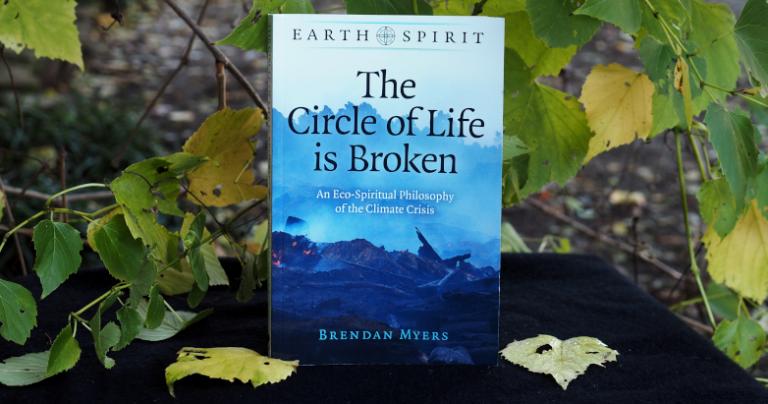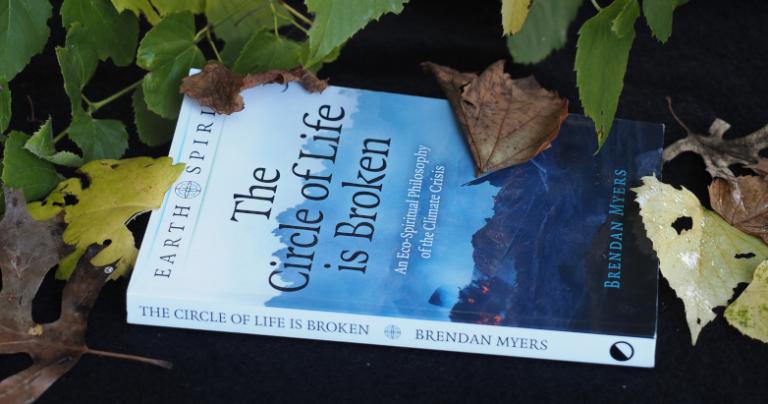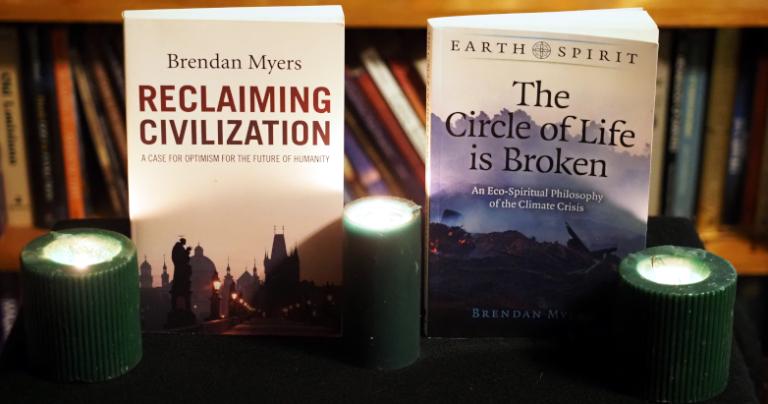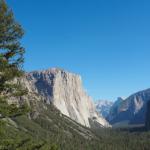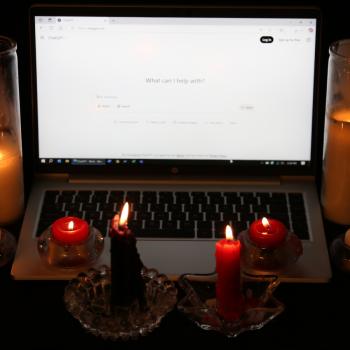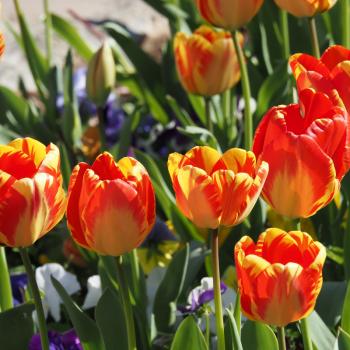The Circle of Life is Broken: An Eco-Spiritual Philosophy of the Climate Crisis
by Brendan Myers
Moon Books – November 2022
232 pages
Trade Paperback: $19.95, Kindle 8.99
Philosophy professor Brendan Myers’ new book The Circle of Life is Broken is the philosophy of climate change: the thinking that got us here, why the thinking that many expected to correct the problems failed (thinking that many still advocate today), and the kind of thinking required to heal the Circle of Life.
Let me give my summary up front: this is a good and necessary book. Its biggest problem is that the people who most need to read it, won’t. It’s not a fun book to read, but it is a helpful book to read. The first step in dealing with any problem is to understand the problem.
Brendan doesn’t waste time getting to the point. He states the problem on page 3:
The global circle of life is breaking down. It isn’t simply changing form. It is also short-circuiting; it is falling apart.
On page 7 he makes something very important very clear:
The greening of the self did not happen.
For at least 70 years (I would argue for longer) people in the West have been aware of the need to make major changes and live in harmony with Nature. And yet here we are, with “all the major indicators of planetary biosphere health continuing to decline.” Even appealing to our own self-interest (a healthy planet is necessary for the continuation and flourishing of human life) has failed to persuade enough people – especially those who control access to the Earth’s resources – of the need to make significant changes in the way we interact with the rest of Nature, and especially in the way we think about Nature.
The roots of our ecological crisis lay in a faulty world view. To summarize it: people simply believed that they had the right to take what they wanted, without regard for Nature’s own needs.
Bad thinking got us here. It will take better thinking to adequately address the problem.
The bulk of the book is organized into three “root questions” which are explored in detail.
What Is The Circle of Life?
If you’ve paid any attention at all over the past couple of decades, you know what’s wrong: too much carbon dioxide in the atmosphere, primarily due to burning fossil fuels that took millions of years to form. Human development destroying the habitats of thousands of species, driving many of them to extinction. Shifting weather patterns that make life more hazardous for humans, particularly those who live in the poorest areas.
I’m an engineer – I like reading the hard science of things like this. But I greatly appreciate those who can weave the hard facts into a narrative that can be understood without resorting to countless graphs and equations. There’s a bigger picture involved: the entire Circle of Life. This section of the book explains what that is, in ways that do not require a Ph.D. in Environmental Science to understand.
In particular, it emphasizes that there is no “balance” in Nature. But there is symbiosis, and the relationships among and between species and ecosystems that symbiosis facilitates.
That symbiosis is being destroyed.
Who Faces The Circle of Life?
This is the longest section of the book. It uses the stages of human life (birth, childhood, adolescence, etc.) as a metaphor for how we understand our place in Nature, and how we relate to the rest of Nature. It draws heavily on the philosophy of Martin Heidegger (1889-1976), though many times in ways Heidegger would not have approved (which is a good thing, from my perspective).
In particular, our current way of thinking about freedom in the West can lead us to:
treating everything, all the things of Earth, all its materials and all its life, including other human beings, as raw materials. And we may find ourselves unable to see things any other way.
And that leads to a key question:
what was all that ecological destruction finally for?
The wealth of the West – the extraction of which is a primary driver of climate change – hasn’t made us happier, more at ease with our own mortality, or more fulfilled with life. We have pursued wealth for the sake of wealth, and like King Midas, we have found that gold is a poor substitute for life and love.
And yet we continue pursuing wealth, because we can’t imagine doing anything else.
The climate crisis represents a failure of thinking.
Can The Circle Be Healed?
Having explained the problem and how we got here, it remains to offer a solution.
This is the shortest section, and it echoes the themes and the proposals of Brendan’s 2017 book Reclaiming Civilization: A Case For Optimism For The Future Of Humanity. I liked that book, but I criticized it for being overly optimistic. Of course it was: it was written pre-Trump and pre-Brexit – basically pre-Tower Time.
Both books propose democratic socialist governments with green policies, and an individual emphasis on pursuing relationships and quality of life instead of wealth and power. It clearly states that ecofascism will make things worse, not better. I’m in strong agreement with that approach. I’m just not optimistic it’s going to go very far.
This book concludes with a question and an answer:
Can we heal The Circle of Life? Yes – if enough people come to love the Earth, to hear its call, to grasp what needs to be done, and do it.
Who should read this book?
This is a good, necessary, and helpful book. It’s not difficult to read. There’s very little philosophy jargon, and Brendan does a good job of presenting complicated concepts in ways that make it easy for non-philosophers to understand.
I wish everyone would read The Circle of Life is Broken, but I know most won’t, especially those who are still denying the reality of climate change despite overwhelming evidence.
I think it will be most helpful to those who understand and accept the science of climate change but who still believe it has simple causes and simple solutions. The core premise of this book is absolutely true: bad thinking got us here, and it will take better thinking to get us to a better situation.
Many of us are grieving over climate change. We love the Earth, we love Nature, we love wild places and wild things, and we love our fellow humans. We are incredibly sad over what has been lost, and what will be lost.
Acceptance is the final stage of grief. The Circle of Life is Broken does an excellent job of helping us understand why things are the way they are, which makes it possible for us to accept an unpleasant reality.
And that makes it possible for us to plan our way forward, where ever the future may lead.
For those who care about such things, Brendan sent me a review copy of The Circle of Life is Broken. Brendan is a friend and I hope his book does well, but my only obligation in a review is to you, the reader. This is my honest opinion of the book, its strengths, and its weaknesses.


